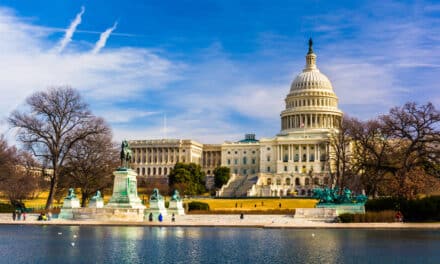The ADA and a coalition of dental stakeholders urged lawmakers to pass bills that would ease the burden of student loans.
In a letter, The Organized Dentistry Coalition, which includes the American Dental Association, asked lawmakers to advance several student loan reform bills out of committee for consideration by the House of Representatives.
“Graduate student debt has been rising at abnormally high rates for decades, even after adjusting for inflation,” the coalition stated in a letter to congress.
The letter noted that dental school graduates are now starting their careers nearly $305,000 in debt ($270,125 for graduates from public dental schools and $349,730 for graduates from private dental schools), according to a 2021 analysis published in the Journal of Dental Education.
The coalition reminded lawmakers that federal student loan interest rates can reach as high as 9.5% or 10.5%, depending on the type of loan, and interest begins accruing immediately.
The group is advocating for the following reform bills:
- HR 4631, the Protecting Our Students by Terminating Graduate Rates that Add to Debt Act, would reinstate eligibility for graduate and professional students with financial need to receive Direct Subsidized Stafford Loans, which are now only available to undergraduate students.
- HR 4122/S 3658, the Resident Education Deferred Interest Act, would allow medical and dental residents to defer payments on their federal student loans — and delay the point at which interest begins to accrue — until after they complete their residency.
- HR 2160, the Student Loan Refinancing Act, would enable borrowers to refinance their federal student loans on multiple occasions to take advantage of lower interest rates.
- HR 1918, the Student Loan Refinancing and Recalculation Act, would provide a chance for borrowers to refinance their federal student loans when interest rates are lower. It would also eliminate loan origination fees and allow medical and dental residents to defer payments until after they complete their residency programs. It also would delay the accrual of interest for many low- and middle-income borrowers while they are in school.
The dental groups also urged members of the House Committee on Education and Labor to cosponsor the following bills, which have been referred to the House Committee on Ways and Means and/or the House Committee on Energy and Commerce:
- HR 4726, the Student Loan Interest Deduction Act of 2021, would double the student loan interest deduction (from $2,500 to $5,000) and eliminate the income limits that prevent those with higher incomes from reaping the benefit.
- HR 7539/S 2874, the Indian Health Service Health Professions Tax Fairness Act of 2022, would allow dentists participating in the Indian Health Service Loan Repayment Program to exclude interest and principal payments from their federal income taxes, as well as certain benefits received by those in the Indian Health Professions Scholarships Program.
- HR 1285/S 449, the Dental Loan Repayment Assistance Act, would allow full-time faculty members participating in the Dental Faculty Loan Repayment Program to exclude the amount of the loan forgiveness from their federal income taxes.
- HR 2295, the HIV Epidemic Loan-Repayment Program Act, would offer up to $250,000 in educational loan repayment to dentists, physicians, and other health care professionals in exchange for up to five years of service at Ryan White-funded clinical sites and in health profession shortage areas.
The coalition reminded lawmakers that federal student loan interest rates can reach as high as 9.5% or 10.5%, depending on the type of loan, and interest begins accruing immediately.
“Educational debt is a particular challenge for the 37% of dental school graduates with debt who pursue (or are required to complete) several years of a low- or non-paying dental or medical residency program,” the group wrote. “These reforms will not eliminate the financial hardship for early career dentists, but they will help offset the unprecedented financial challenges these essential health care providers face at graduation.”
Photo 118912254 © Ernitz | Dreamstime.com










